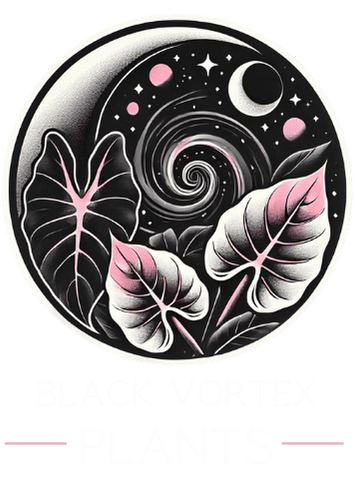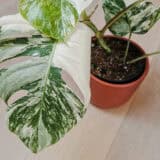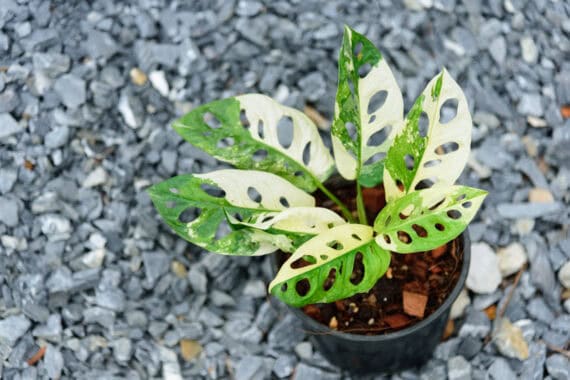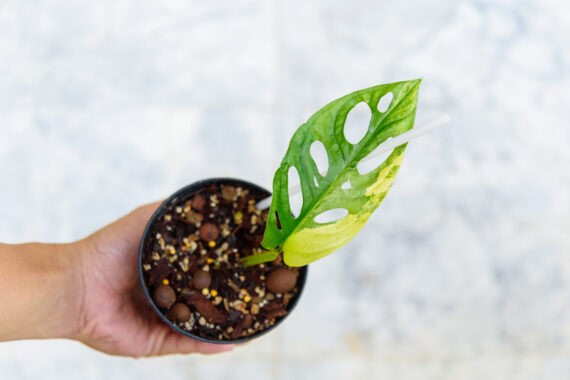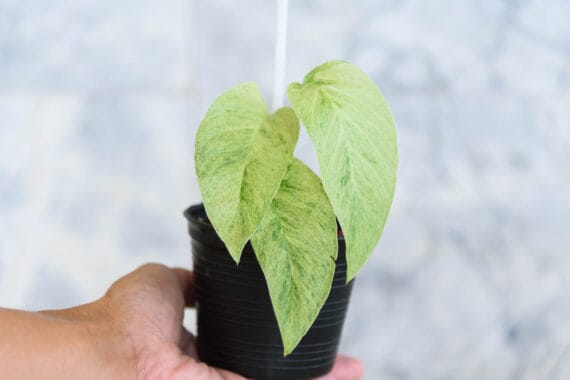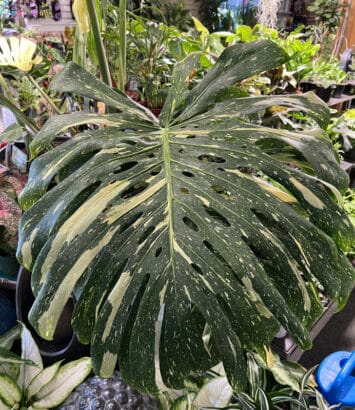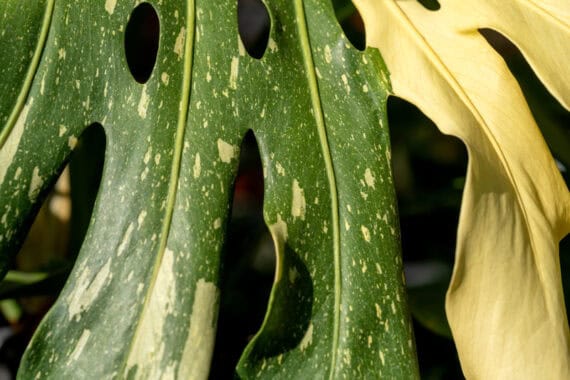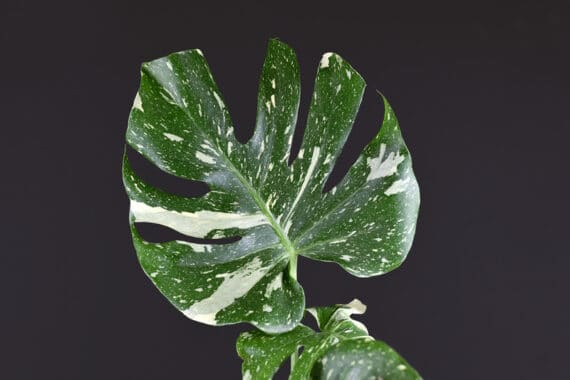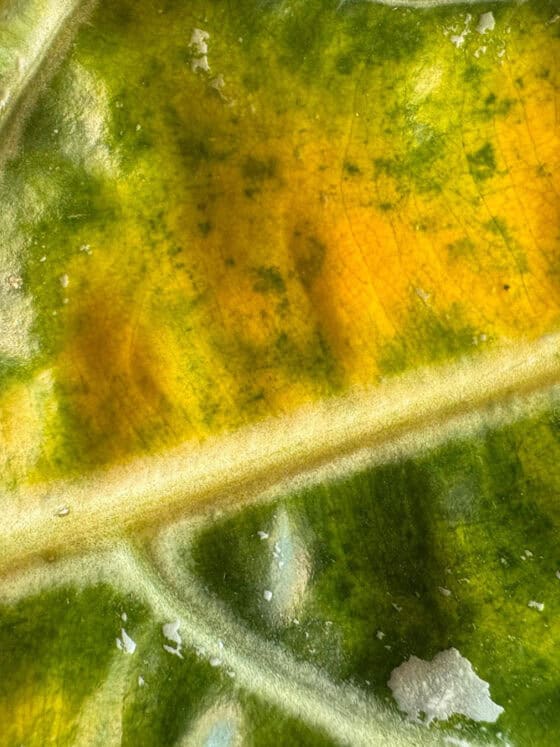Share
Both Monstera Variegata and Monstera Albo Variegata are terms used to describe different types of variegated Monstera plants. The word “Monstera” itself refers to the genus of these plants, not just a single species. Most often, when we talk about Monstera, we mean Monstera deliciosa, which is sometimes called the “Swiss cheese plant” due to its distinctive leaf holes or the “split-leaf philodendron,” a name that was once commonly used even though it’s not actually a philodendron. However, there are several other species in this genus, like Monstera adansonii (often called Adanson’s monstera) and Monstera obliqua, which also has multiple variants, including the well-known “Peru.”
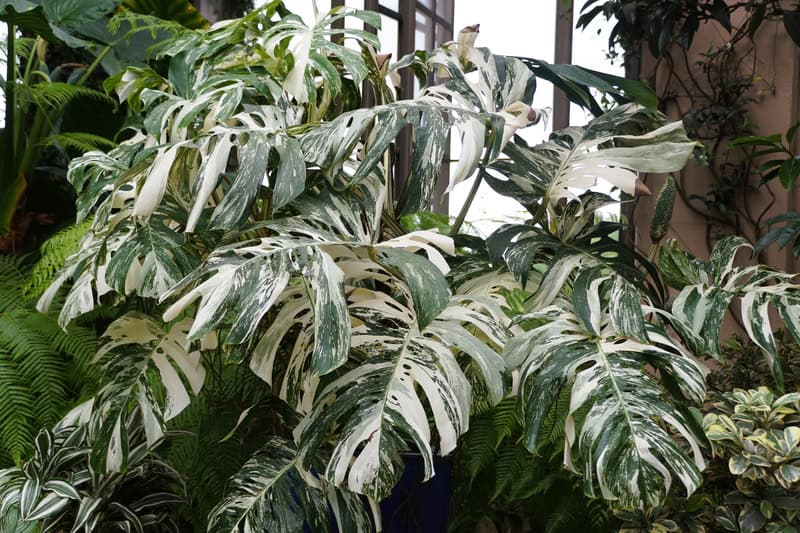
Variegation refers to any kind of color variation in the leaves of a plant. This feature is not exclusive to Monsteras; it can occur in all types of plants, like garden Heucheras, Hostas, or even African violets that our grandmothers loved. Variegation doesn’t automatically mean the plant is rare, but because variegated plants often arise as mutations from the original species, they tend to be rarer than their non-variegated counterparts.
When we combine the terms Monstera and variegata, we naturally mean a Monstera plant with variegated leaves. Technically, this term is quite general and lacks specifics. In theory, it could refer to Monstera deliciosa variegata or even Monstera adansonii variegata. Saying just “Monstera variegata” leaves us uncertain about which Monstera species it is or what color the variegation might be. This is where the term “Albo” becomes relevant.
The term “Albo” comes from the Latin word for “white,” and in the context of plant variegation, it indicates that the plant has white patches or patterns on its leaves. So, Monstera Albo Variegata specifically refers to a Monstera with white variegation on its green leaves.
Variegation can appear in a variety of colors depending on the plant, including white, light green, creamy, or even yellow patches mixed with the green of the leaves. Some plants, like many species of Alocasia, can even have pink variegation. Sometimes different types of variegation occur together, like Albo/Pink or Pink/Aurea.
Monstera plants, however, do not have pink variegation, and many of their variants remain relatively unfamiliar to the average plant enthusiast. As a result, when people mention Monstera variegata, they typically mean Monstera deliciosa albo variegata, or sometimes the Thai Constellation variety.
So, what is this Monstera Thai Constellation? It’s a Monstera variant developed in laboratory conditions in Thailand, not a mutation that occurs naturally. It has been specifically bred to produce more uniform and controlled variegation compared to, for example, M. deliciosa albo variegata. The variegation in Thai Constellation is creamy or sometimes light yellow, with a distinctive starry pattern that usually covers the entire leaf, giving the plant its name.
Even though the Thai Constellation is deliberately cultivated, it is still considered variegated because, as mentioned, variegation simply refers to color variation. Some people mistakenly believe that because the Thai Constellation’s variegation is lab-created, it doesn’t count as true variegation, but this isn’t accurate. Even if a plant’s variegation results from tissue culture or other lab techniques, it is still the product of genetic modification that affects the pigments in its leaves.
Sometimes, specific types of variegation get trendy names, like “Crème Brûlée,” “Green on Green,” or “Bulbasaur,” to make them more appealing. However, the absence of the word “variegated,” “variegata,” or “color variation” in the name does not mean the plant lacks variegation.
To summarize:
- Monstera variegata: Any Monstera plant with some form of variegation.
- Monstera albo variegata: A Monstera plant with white variegation.
- Monstera deliciosa albo variegata: A Monstera deliciosa with clearly defined white variegation. The variegation might be concentrated in patches or appear as small speckles throughout the green parts of the leaves.
- Monstera Thai Constellation: A specific Monstera variety developed in a lab, characterized by creamy, pastel yellow, or white variegation. Its star-like speckled patterns usually cover the entire leaf, giving it a distinct look that inspired its name.
I hope this helps!

